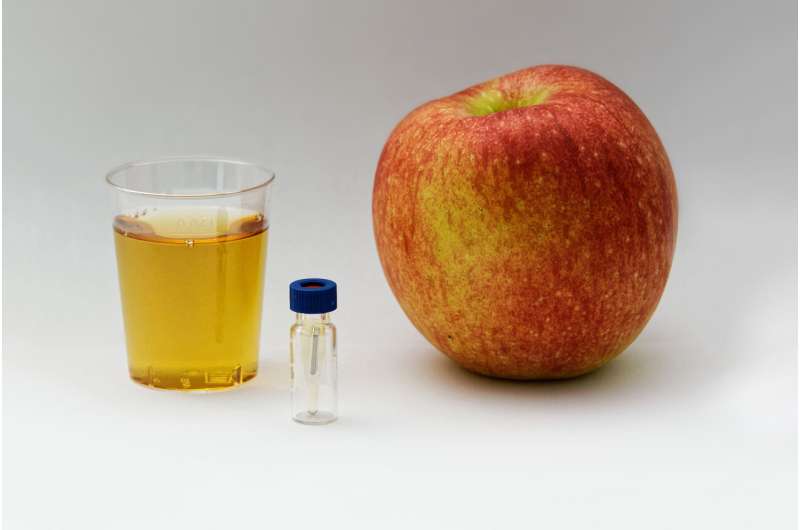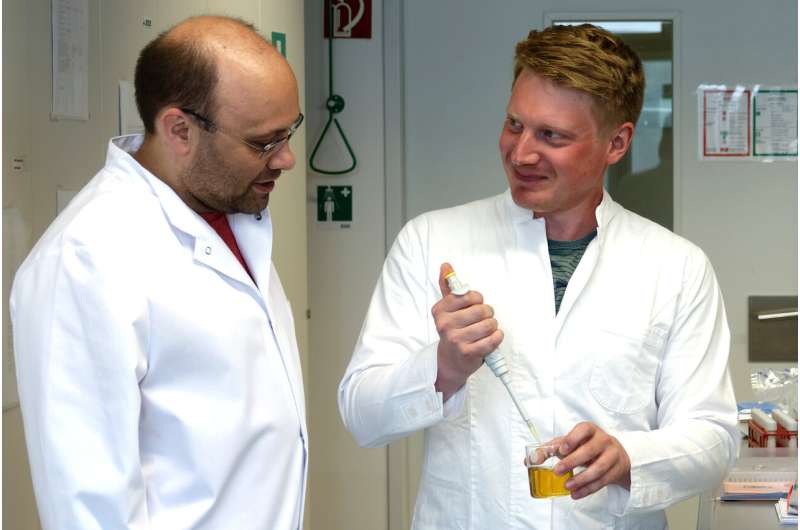Food quality control made faster and easier

Scientists at the Technical University of Munich (TUM) and the Leibniz-Institute for Food Systems Biology have developed a new methodology for the simultaneous analysis of odorants and tastants. It could simplify and accelerate the quality control of food in the future.
Whether a food tastes good or not is essentially determined by the interaction of odors and tastes. A few trillionths of a gram per kilogram of food is enough to perceive some odorants. Tastants, on the other hand, are recognized only at significantly higher concentrations.
In order to guarantee consistent sensory quality, it is important for manufacturers to know and control the characteristic odor and taste profiles of their products from the raw material to the finished product. This requires fast, precise food analysis.
Tastants and aroma substances, however, differ greatly in their chemical and physical properties. As a result, food chemists currently use very different methods to determine the exact nature and quantity of odorants and tastants in a raw material or food. Aroma analyses are especially time-consuming and expensive. This limits the high-throughput analysis of numerous samples.
One methodical approach for two different substance classes
Thomas Hofmann, director of the Leibniz-Institute for Food Systems Biology and professor of food chemistry and molecular sensory science at the TUM, explains, "We have now developed a new, innovative methodical approach that will enable us to examine food simultaneously for both odorants and tastants in a time-saving high-throughput process. It is based on an ultra-high performance liquid chromatography mass spectrometry (UHPLC-MS) method typically used for taste analysis."

The time-saving feature of the new approach is that volatile odorous substances can now also be analyzed by means of an upstream enrichment or substance conversion step using this method, which is otherwise not used for aromatic substances.
"We have tested our new methodological approach using apple juice as an example. The results are very promising," says Andreas Dunkel, senior scientist at the Leibniz-Institute of Food Systems Biology. Together with doctoral student Christoph Hofstetter from the TUM, he was substantially involved in the development of the new approach.
According to the scientists, the new method makes it possible for the first time to analyze a large number of samples in a very short time with regard to their taste and odor giving ingredients.
Also suitable for food profiling
The researchers hope to further develop the method so that it can be used by food manufacturers to monitor the flavor of food along the entire value chain, and, if necessary, optimize it.
Last but not least, the new method could also be used to stop food fraud. "Using the identified flavor profiles, it would be possible to check the origin and quality label of the manufacturers and detect food fraud," says food profiler and food chemist Andreas Dunkel.
More information: Christoph Konrad Hofstetter et al, Unified Flavor Quantitation: Toward High-Throughput Analysis of Key Food Odorants and Tastants by Means of Ultra-High-Performance Liquid Chromatography Tandem Mass Spectrometry, Journal of Agricultural and Food Chemistry (2019). DOI: 10.1021/acs.jafc.9b03466
Journal information: Journal of Agricultural and Food Chemistry
Provided by Technical University Munich





















